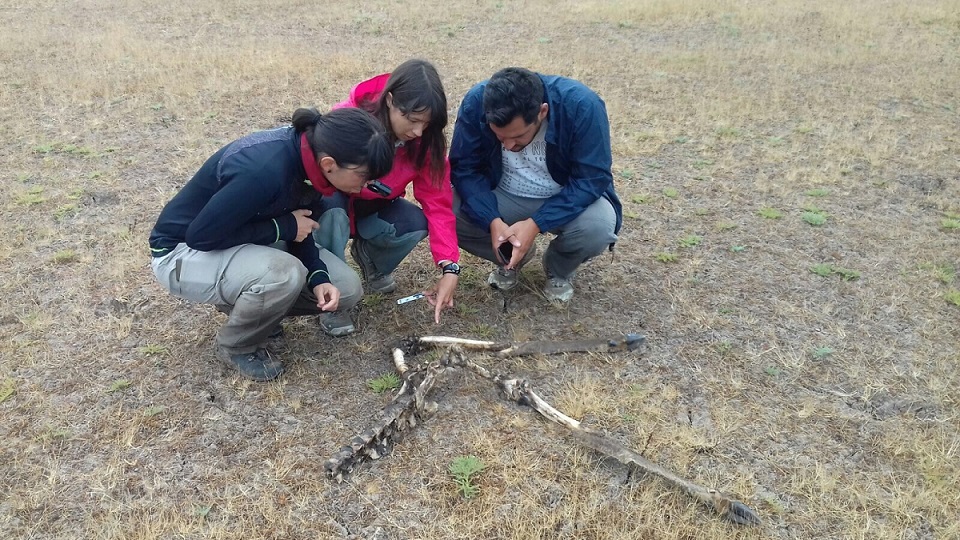Modern death assemblages provide insights about the early stages of fossilization and useful ecological information about the species inhabiting the ecosystem. The results of taphonomic monitoring of modern vertebrate carcasses and bones from Doñana National Park, a Mediterranean coastal ecosystem in Andalusia, Spain, are presented. Ten different habitats were surveyed. Half of them occur in active depositional environments (marshland, lake margin, river margin, beach and dunes). Most of the skeletal remains belong to land mammals larger than 5 kg in body weight (mainly wild and feral ungulates). Overall, the Doñana bone assemblage shows good preservation with little damage to the bones, partly as a consequence of the low predator pressure on large vertebrates. Assemblages from active depositional habitats differ significantly from other habitats in terms of the higher incidence of breakage and chewing marks on bones in the latter, which result from scavenging, mainly by wild boar and red fox. The lake-margin and river-margin death assemblages have high concentrations of well preserved bones that are undergoing burial and offer the greatest potential to produce fossil assemblages. The spatial distribution of species in the Doñana death assemblage generally reflects the preferred habitats of the species in life. Meadows seem to be a preferred winter habitat for male deer, given the high number of shed antlers recorded there. This study is further proof that taphonomy can provide powerful insights to better understand the ecology of modern species and to infer past and future scenarios for the fossil record. informacion[at]ebd.csic.es: Domingo et al (2020) Taphonomic information from the modern vertebrate death assemblage of Doñana National Park, Spain. PLOS ONE 15(11): e0242082. DOI 10.1371/journal.pone.0242082
https://journals.plos.org/plosone/article?id=10.1371/journal.pone.0242082  Latest News
Latest News
 Las altas temperaturas están provocando que las lagunas y las marismas de Doñana pierdan agua rápidamente
Las altas temperaturas están provocando que las lagunas y las marismas de Doñana pierdan agua rápidamente
La superficie inundada en la marisma es de un 78% pero la profundidad es escasa. Por otra parte, sólo el 1,9% de las lagunas temporales están inundadas. Las precipitaciones crean una oportunidad...
 Traffic noise causes lifelong harm to baby birds
Traffic noise causes lifelong harm to baby birds
A study with CSIC participation reveals for the first time that car noise harms individuals throughout their lifetime even years after exposure
 Illegal wildlife trade, a serious problem for biodiversity and human health
Illegal wildlife trade, a serious problem for biodiversity and human health
A research team led by the Doñana BIological Station and the University Pablo de Olavide have detected wild-caught pets in 95% of the localities in the Neotropic and warns of the risk of zoonotic...
 Urbanization and loss of woody vegetation are changing key traits of arthropod communities
Urbanization and loss of woody vegetation are changing key traits of arthropod communities
Urbanization is favouring smaller beetle species and larger spider species with greater dispersal capacity.
The loss of woody areas is linked to a decline in the duration of the activity...
The loss of woody areas is linked to a decline in the duration of the activity...
 Blood lead levels in an endangered vulture species decreased following restrictions on hunting practices
Blood lead levels in an endangered vulture species decreased following restrictions on hunting practices
Canarian Egyptian vulture was on the verge of extinction at the end of the 20th century. At that time, studies revealed that lead poisoning was a serious problem for the population’s survival. The...
— 5 Items per Page
 Asset Publisher
Asset Publisher
Back






